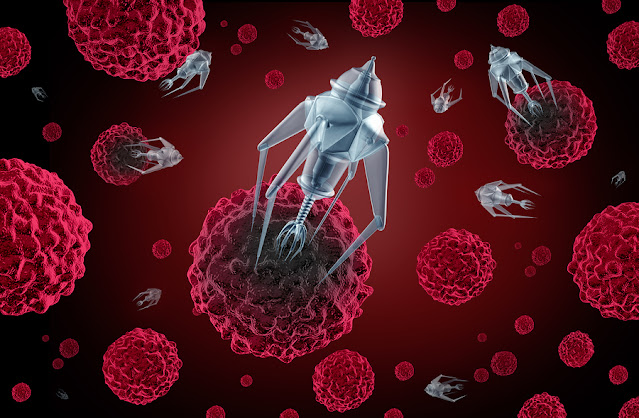Azelaic Acid Demystified: Your Key to Beautiful, Blemish-Free Skin
 |
| Azelaic Acid |
Azelaic acid is a naturally occurring acid found in wheat, rye and barley that
is gaining popularity in the skincare world as an acne treatment. This article
will explore the benefits of azelaic acid for skin, how it works, and its
potential uses beyond acne.
Properties and Origins of Azelaic Acid
Azelaic acid is a dicarboxylic acid consisting of a nine-carbon chain with
carboxylic acid functional groups at each end. It occurs naturally in some
grain cereals and is also produced by the yeast Malassezia furfur. This yeast
resides normally on human skin and overgrowth can lead to pityriasis versicolor
or seborrheic dermatitis. Azelaic acid helps regulate yeast growth on the skin.
How Azelaic Acid Works
The mechanism of action for azelaic acid involves inhibition of keratinocyte
melanin synthesis, which reduces hyperpigmentation. It also has antibacterial
properties against Propionibacterium acnes (P. acnes), the bacteria that causes
acne. Additionally, it reduces inflammation by inhibiting the release of
pro-inflammatory mediators from skin cells. These combined effects make azelaic
acid an effective acne treatment.
Treating Acne and Rosacea
As an acne treatment, azelaic acid can reduce non-inflammatory and inflammatory
lesions like papules, pustules, nodules and cysts. It is often prescribed as a
topical gel, foam or cream for mild to moderate acne. Studies show azelaic acid
is as effective as topical benzoyl peroxide without the drying or irritating
effects. It is also Food and Drug Administration (FDA) approved for treatment
of rosacea. Azelaic acid reduces inflammation and bumps associated with
rosacea.
Post-Inflammatory Hyperpigmentation
A notable benefit of azelaic acid is its ability to reduce post-inflammatory
hyperpigmentation after acne lesions heal. By inhibiting melanin production, it
can help fade dark spots and marks left behind from past breakouts. Regular use
may help prevent or minimize future pigmentation issues from recurring acne
breakouts.
Reduces Signs of Aging
Beyond acne, some preliminary studies indicate azelaic acid may help reduce
signs of aging by inhibiting matrix metalloproteinases (MMPs), which are
enzymes that can break down collagen. Regular use may help diminish fine lines
and wrinkles over time. It could also improve skin brightening and tone. More
research is still needed, but azelaic acid shows promise for anti-aging
effects.
Redness, Irritation and Burning may Occur
While generally well tolerated, some people using azelaic acid Cream or gel
formulated products may experience mild transient stinging, burning, irritation
or redness when first applying the product, especially if the skin is
sensitive, damaged or dry. Side effects are usually mild and diminish
significantly after a few initial applications. To reduce irritation, it's best
to start with a low strength formula and build up usage gradually as tolerance
increases. Moisturizing the skin beforehand can also help minimize any
potential irritation from azelaic acid. Anyone experiencing severe reactions
should speak to their dermatologist.
Precautions and Who Should Use It
Azelaic Acid is
categorized as pregnancy category B by the FDA, indicating no risk in animal
studies but safety for use during pregnancy has not been confirmed. Out of an
abundance of caution, topical use is typically not recommended during pregnancy
unless under medical guidance. It is also advisable to avoid direct exposure to
sunlight or UV rays for at least 30 minutes after application due to a
potential of increased photosensitivity. People experiencing significant
reactions to any active ingredients in formulas should speak to a doctor before
continuing use. Outside those constraints, azelaic acid is suitable and
effective for most skin types dealing with acne, rosacea or hyperpigmentation
concerns.
Future Potential Uses
While the acne and rosacea clearing properties of topical azelaic acid are well
established, ongoing research continues exploring additional therapeutic
benefits. Studies indicate it may have potential anti-cancer effects on
melanoma cells, work as an anti-aging agent to fight UV induced skin damage and
boost natural collagen production over time. Preliminary animal and human
trials are evaluating whether oral or topical azelaic acid can help treat
non-melanoma skin cancers. As research advances, azelaic acid may prove useful
for an ever wider range of dermatological conditions in the future.
Azelaic acid is a safe and effective natural acid derived from grains that has
multiple mechanisms of action beneficial for skin. Beyond clearing acne
lesions, it provides photoprotection, reduces PIH, soothes rosacea and shows
early promise as an anti-aging agent as well as novel cancer prevention
applications. With its ability to target multiple issues through breakdown of
melanin, suppression of inflammation and inhibition of bacteria, azelaic acid
will likely continue rising in popularity as a multi-purpose skincare
ingredient in years to come. For anyone struggling with acne, hyperpigmentation
or redness issues, azelaic acid is a top natural choice to discuss with a
dermatologist.
For
More details on the topic:
https://www.newsstatix.com/azelaic-acid-size-share-analysis-growth/
Check more trending articles related to this topic:



Comments
Post a Comment